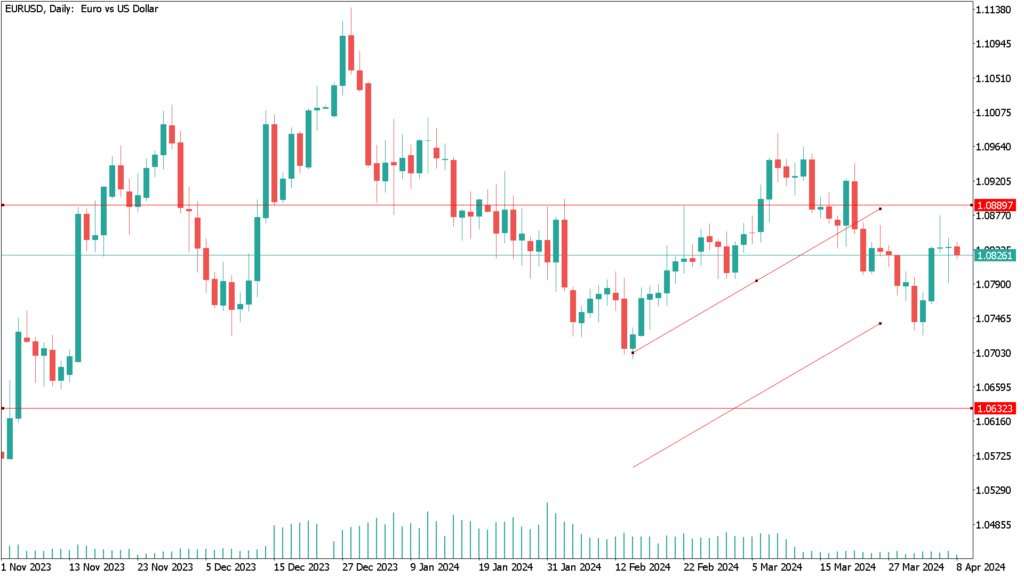The EUR/USD’s downtrend worsened, and the pair fell to its lowest level since February 15th of this year.
According to the economic calendar, the most recent employment report showed that the U.S. economy added nearly 303,000 jobs last month, the largest increase in 10 months and far exceeding market estimates of a 200,000 increase. In addition, the U.S. unemployment rate declined to 3.8%, down from a two-year high, while wage growth remained strong. On the other hand, slowing inflation pressures in the eurozone, along with the European Central Bank’s stance, have supported the thinking that Europe’s central bank will begin cutting interest rates by June. Additionally, the ECB’s latest accounts informed policymakers’ growing confidence in inflation’s path toward its 2% target and strengthened the case for a rate cut. Similarly, Wednesday’s data pointed to a larger-than-estimated decline in inflation in Europe to 2.4% in March.
On the upside, given the surprisingly strong employment numbers, U.S. consumer price data is expected to show a significant deceleration in core inflation, which supports a cautious approach by the Fed towards cutting interest rates. March’s core consumer price index, a measure of inflation that does not include food and energy, is expected to increase 0.3% from last month, after rising 0.4% during February. Similarly, Wednesday’s report is expected to signal a similar increase in headline CPI.
The core price measure is forecast to increase 3.7% compared to last year, the smallest increase since April 2021.Although the year-over-year figure is below the 6.6% peak achieved in 2022, recent developments have not been even. Overall, the closely watched inflation numbers come on the heels of the most recent U.S. jobs report that beat estimates for the fifth month in a row. Although Fed officials have indicated moderating labor demand over the past year as a possible prelude to a rate cut, the 303,000 payroll increase in March could raise questions about the extent of that moderation and its connotations for inflation.
It must also be said that many Fed officials who have been vocal in the past week continued to be consistent in their messaging, stating they are waiting until there is more precise evidence that inflation is moderating toward its target before taking the first step towards a rate cut.
Daily technical analysis EUR/USD April 8th
The Euro (EUR) is under pressure at the moment, as Europe’s economy continues to face challenges. The decline in the EUR/USD price has intensified, and the pair has fallen to its lowest level since February 15th of this year. Market sentiment suggests that the EUR/USD plunged due to economic data from Europe and the United States indicating differing approaches by the European Central Bank (ECB) and the Federal Reserve (Fed).
In a general overview, the EUR/USD has continued to trend sharply lower as of late. This decline comes after the pair hit its highest level in March at 1.0978.
The outlook for the EUR/USD is bearish. The next support level to watch is at 1.0690; if the pair falls below this, it could further drop to 1.0600. Conversely, bearish projections will need to be reassessed if the EUR/USD manages to break above the psychological resistance level of 1.1000.




